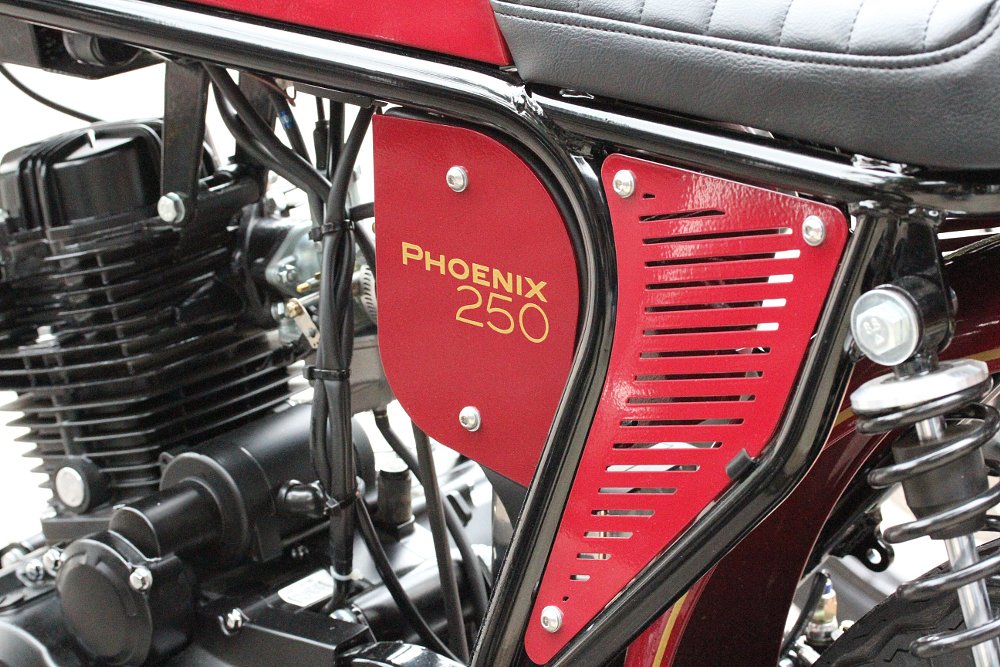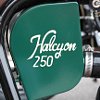A century ago, there were literally hundreds of motorcycle manufacturers in the United States.
There was a tremendous amount of excitement around this new form of transportation and small motorcycle companies popped up all around the country. Since the early machines were not much more than powered bicycles, getting into the game wasn’t quite so hard. It still took a lot of work and determination to build a rideable machine, but it was a readily achievable goal.
Fifty years, two world wars and the Great Depression later, the only company left standing was Harley-Davidson. Since then, American motorcycle manufacturing has been slow to rebound and as more manufacturing moves overseas, it's doubtful that we will ever see a proliferation of American-made brands again. Still, from time to time, a new company arrives on the scene.

The current Janus lineup consists of the Halcyon 250 and the Phoenix 250.


At first glance, these bikes look like two completely different machines. The Halcyon’s design harkens back to the 1920s and the era of board-track racing while the Phoenix’s styling is all café racer. If you look closely, you’ll see that the two machines do have quite a bit in common. Although the Halcyon is a hardtail and the Phoenix sports a swingarm with rear suspension, they both share the same double-cradle frame inspired by the Norton Manx featherbed chassis made popular in the 1950s. They also both use a leading link front suspension which was designed by Janus and is built in house.


An integrated five-speed transmission will take both machines to 70 mph and uses the standard foot shift/hand clutch setup we are all familiar with. The 18-inch wheels are fitted with a set of disc brakes with a two-piston caliper up front and a single-piston on the rear.
Despite sharing so many major components, Janus has created two amazingly different machines while simplifying their production process.

My first test ride was on the Halcyon 250. Being a vintage motorcycle enthusiast, I am sure you can see why. What really stands out on this machine is the all-aluminum gas tank, which has been polished, painted, hand-striped and lettered. Its unique shape gives a real custom look to the bike and creates that 1920s visual appeal. A sprung leather solo seat provides some relief from the lack of rear suspension and if you need to carry a passenger, a pillion seat is available and mounts to the luggage rack.
The riding position is the standard “sit up and beg” configuration, and with such a light machine, it’s reminiscent of riding a bicycle. Out on the street, the Halcyon is very nimble and navigates around traffic with ease, zipping around corners and sometimes even on sidewalks (no one saw me, I promise). I found first gear to be almost superfluous, as the bike didn’t seem to really move until you shifted into second. Out on the highway, things got a bit louder as I wound out fifth gear, but I was able to reach 60 mph without feeling like I was wringing its neck.

The Phoenix 250 was an altogether different ride. Like the Halcyon, it features its own custom-made aluminum tank. I should note that both styles of tanks are hand welded from multiple pieces of aluminum and not just a stamped, mass-produced piece. The leather-wrapped café racer-style seat accommodates one rider (no room for passengers) and is two inches higher than that of the Halcyon at 32 inches. While the riding position of the Halcyon could be described as relaxed, the Phoenix is all business, with lower bars that keep you tucked forward in a more race-ready stance. In town, it performed equally well, being easy to maneuver and confidence-inspiring with its low weight. The forward-leaning riding position, while not my personal favorite, did have the advantage of putting more weight on the front end. The more aerodynamic profile allowed me to reach close to 80 mph on the highway, which was pretty surprising with just those 14 horses under me.

My overall impression of both motorcycles was they are a blast to ride. Light and agile are great attributes, whether for inner city commuting or blasting down the back roads. The engine was up to the challenge of carrying my 180-pound frame around and all the controls were standard, so there was nothing to relearn before riding out.

At $5,995 each, the Janus motorcycles are pricier than the mass-produced Japanese competition, such as the Suzuki TU250 ($4,399) or even the sportier Yamaha YZF-R3 ($4,990), but I believe the quality of the construction and the unique style make them worth the extra expense.

For those who are looking for something a little out of the ordinary and want to buy American without having to change their wardrobe to black T-shirts and jeans, then the Halcyon 250 and the Phoenix 250 are worth checking out. Janus is hitting the road this summer with a van load of demo bikes too, so check their their website to find out where you can take one for a spin.
| Halcyon 250 | Phoenix 250 | |
| Engine | Air-cooled, four-stroke, overhead-valve single | |
| Displacement | 229 cc | |
| Bore x stroke | 67 mm x 65 mm | |
| Compression ratio | 9.2:1 | |
| Horsepower | 14 | |
| Ignition/starter | CDI/both kick and electric | |
| Transmission | Five-speed, chain final drive | |
| Front brake | Single disc, two-piston caliper | |
| Rear brake | Single disc, single-piston caliper | |
| Front tire | 3.0 x 18 inches | |
| Rear tire | 3.5 x 18 inches | |
| Front suspension | Leading link fork with dual progressive shocks | |
| Rear suspension | Rigid frame with sprung seat | Dual progressive shocks |
| Seat height | 30 inches | 32 inches |
| Weight | 245 pounds | |
| Wheelbase | 53 inches | |
| Fuel capacity | 2.4 gallons | |
| Instrumentation | Analog speedometer, odometer, turn indicator, and neutral light | |
| MSRP | $5,995 | |













